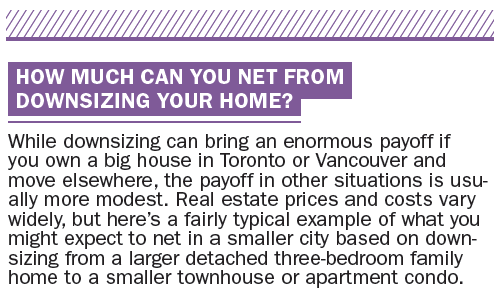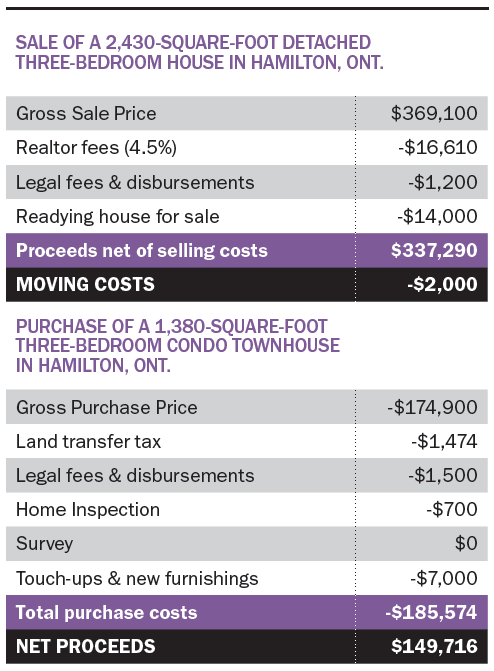Downsizing: Go small, think big
Downsizing in retirement can add a sizeable chunk of income to your nest egg, paving the way for more security and enjoyment in your golden years
Advertisement
Downsizing in retirement can add a sizeable chunk of income to your nest egg, paving the way for more security and enjoyment in your golden years

 Notes: Prepared with the assistance of Melanie Reuter, Elizabeth Campbell and Don Campbell of the Real Estate Investment Network. Gross sale price, gross purchase price and land transfer tax are taken from actual recent real estate transactions in Hamilton, Ont. (In this case, the seller of the house and buyer of the townhouse are not the same.) The other figures are estimates. Realtor fees can vary from 2.5% to 6%. Money spent on readying house for sale as well as touch-ups and new furnishings will vary widely. Buyer is often required to commission a survey by the mortgage lender if the seller can’t produce one done fairly recently. In this case we’ve assumed no new survey is required. Land transfer taxes vary widely across Canada but most provinces have them. Purchase of a newly constructed home would be subject to additional costs, particularly GST. In this case, both properties are resales and not subject to GST.
Notes: Prepared with the assistance of Melanie Reuter, Elizabeth Campbell and Don Campbell of the Real Estate Investment Network. Gross sale price, gross purchase price and land transfer tax are taken from actual recent real estate transactions in Hamilton, Ont. (In this case, the seller of the house and buyer of the townhouse are not the same.) The other figures are estimates. Realtor fees can vary from 2.5% to 6%. Money spent on readying house for sale as well as touch-ups and new furnishings will vary widely. Buyer is often required to commission a survey by the mortgage lender if the seller can’t produce one done fairly recently. In this case we’ve assumed no new survey is required. Land transfer taxes vary widely across Canada but most provinces have them. Purchase of a newly constructed home would be subject to additional costs, particularly GST. In this case, both properties are resales and not subject to GST.
Share this article Share on Facebook Share on Twitter Share on Linkedin Share on Reddit Share on Email